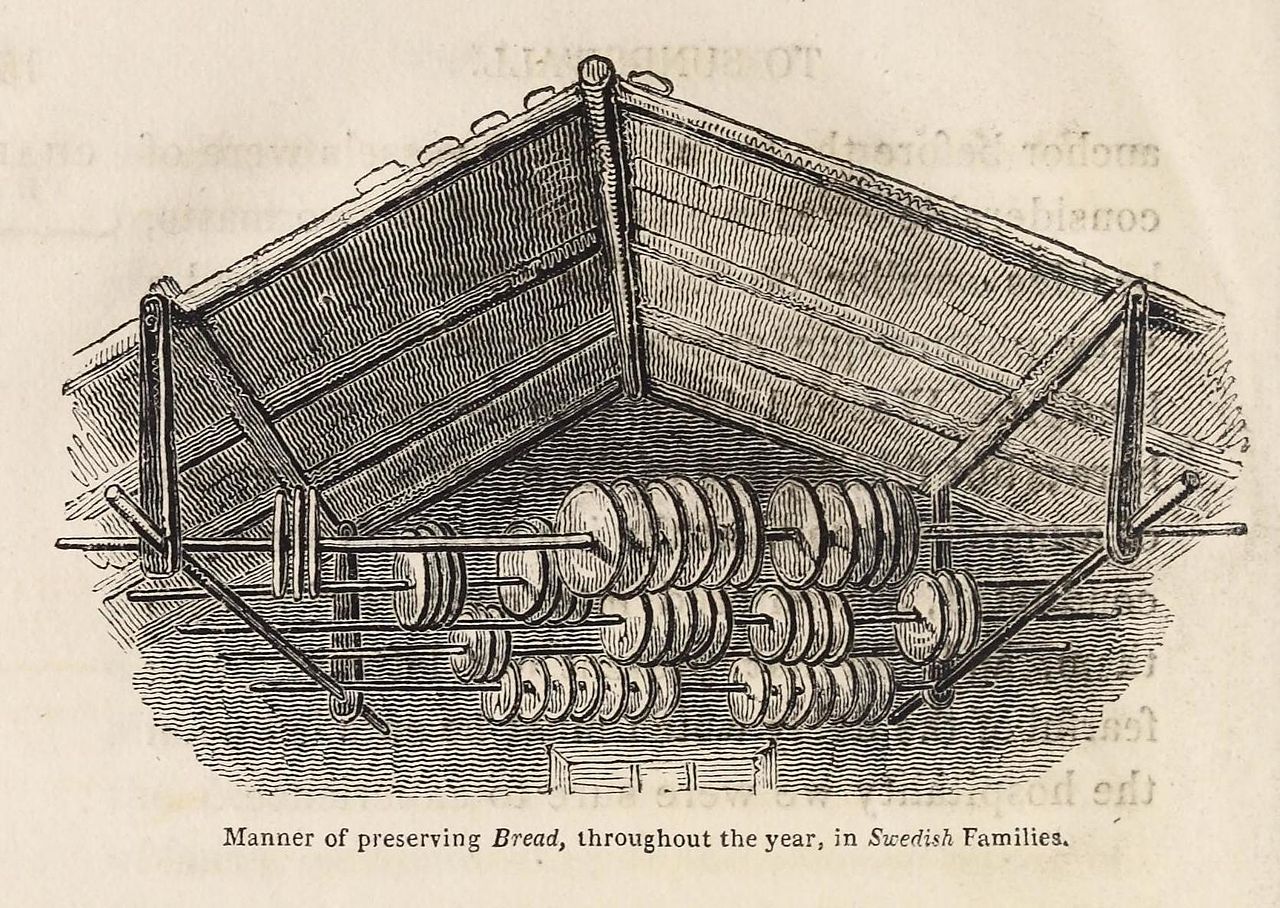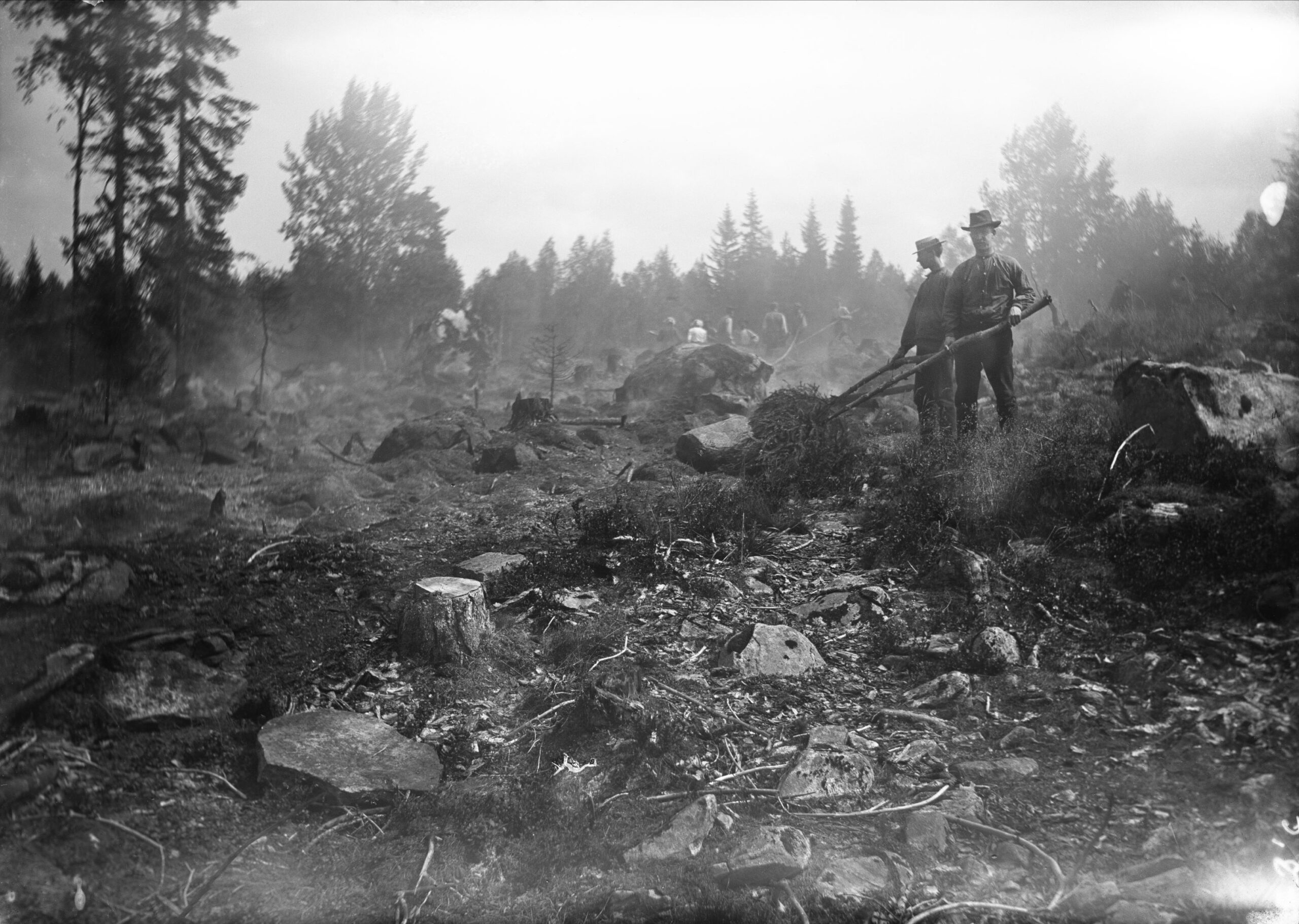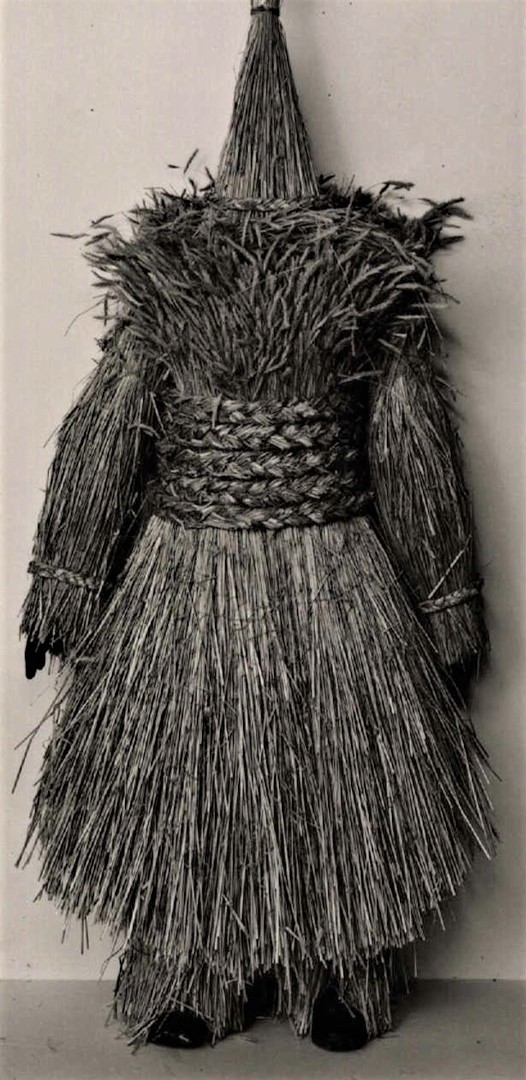
Variability and dynamics of Nordic rye
In the late medieval period, cereal cultivation and consumption in Scandinavia changed. After almost 2000 years of having barley (Hordeum vulgare) as the primary grain crop, the use of rye (Secale cereale) increased fast. The reasons for this shift are not fully clear, but several theories have been proposed. One hypothesis is that the climate became colder and more unstable favouring rye. Another explanation is that crop rotation systems changed introducing fallow in a three-year rotation. Rye was preferably sown following fallow. Finally, yet importantly, new types of bread were introduced to Scandinavia: Soft dark loaves in German style and hard flat crisp bread in Finnish style. Both types required rye for their making.
Figure 1. Flat crisp bread, made from rye, became popular in the late medieval period. This bread type could be stored for several years. Illustration from Travels in various countries of Europe, Asia and Africa (London, 1824).
Over the 400 years to come, rye was the dominant cereal in Scandinavia, although barley prevailed in some areas and oats for fodder purposes became common in the 19th century. The extensive rye cultivation is notable in historical and ethnological records on traditional agriculture and particularly fascinating are descriptions of many different cultivation systems of rye and associated landraces.
The most common type was “Larsmässeråg”, traditionally sown on Saint Lawrence (Swedish: Lars) day the 10th of August and harvested the following year. Larsmässeråg was cultivated on permanent fields, but had modest requirements and could grow also on light soils with little nutrients. Many local landraces occurred of this type, typically named after the province where they were cultivated. Yields were stable, but low. Typically, the yield ratio was four harvested kernels for each kernel sown.
Higher yields were obtained in slash-and-burn cultivation. In this type of cultivation spruce forest was cut, the branches left to dry for a year or two and then burnt after which rye was sown in the fertile ashes, usually around midsummer time. The rye used in this type of cultivation system was called “bush-rye” or “forest rye”. Its most prominent trait was an extreme tillering capacity. A single plant could produce twenty spikes or more. The plants were sown at sparse distances due to the uneven ground, full of stocks and rocks, but the bush rye could compensate for this by producing more tillers. Thus, the yield ratios from slash-and-burn cultivation were usually much higher than on permanent fields.
Other types of rye cultivation included “late rye”, rye sowed late in the autumn, after harvest of a pre-ceding crop; midsummer-rye, sown in June, then grazed by sheep or cattle in the autumn and yielding a grain crop the following year; “lazy-mans-rye”, sown together with spring cereals, such as oats or barley, in the spring, and then harvested of spring cereal grain the first year and rye grain the second year. Additionally, different types of spring rye occurred.
The genetic variability
These multiple types of rye cultivation described in the historical literature suggest genetic adaption to the different cultivation systems. The literature also mentions specific types used in the specific systems. But, to our surprise, a molecular genetic study of landrace rye from Europe showed that all landraces of rye from the Nordic countries were more or less genetically similar. Instead, large genetic variability was present within the populations. This means, that almost any rye population was dynamic enough to grow in any cultivation system and that ascribed traits to the rye populations, more likely were caused by the way of cultivation. The frequent rye cultivation also meant that gene flow between populations was common. Rye pollen spread by wind several kilometres. This being said, some inherited traits, could of course still differ between populations, but were not visible in our genetic screen.
An interesting contrast was noted with rye landraces from Iberia. In this case, the different rye landraces were much more genetically differentiated. Likely, due to rye being a less common crop in Iberia, the populations are more isolated from each other and gene flow is lower. Thus, variability between populations is higher and variability within populations is lower. This observation was also confirmed by more detailed studies of rye landraces from Portugal.
Figure 3. Century-old rye straw artefacts used for genetic analyses of historical rye.
Turning back to the North, we next studied the variability of Nordic rye in time. DNA was extracted from herbarium samples and artefacts made by rye straw up to 350 years old. But going backwards in time we could not observe any variability in the Nordic rye, the same genetic type of rye seems to have been cultivated here for at least this time period. In contrast, going forward in time, we noticed that rye straw objects from the 1920s and onwards were of another genetic type. From this time period improved cultivars became common in the Nordic agriculture.
Today, rye is a very marginal crop in the Nordic countries. However, the historical records show the large potential for rye to adapt to shifting conditions. In times of climate change, dynamic rye populations could well be a way to mitigate effects of the extreme weather to come.
Matti Leino is an agronomist and associate professor in plant genetics. He has for twenty years worked with research projects on the history of Nordic agricultural and horticultural crops, combing biology, history and archaeology. His current project is based at the Archaeological Research Laboratory at Stockholm University where climate impacts of crop plants in history and pre-history are studied.




0 Comments